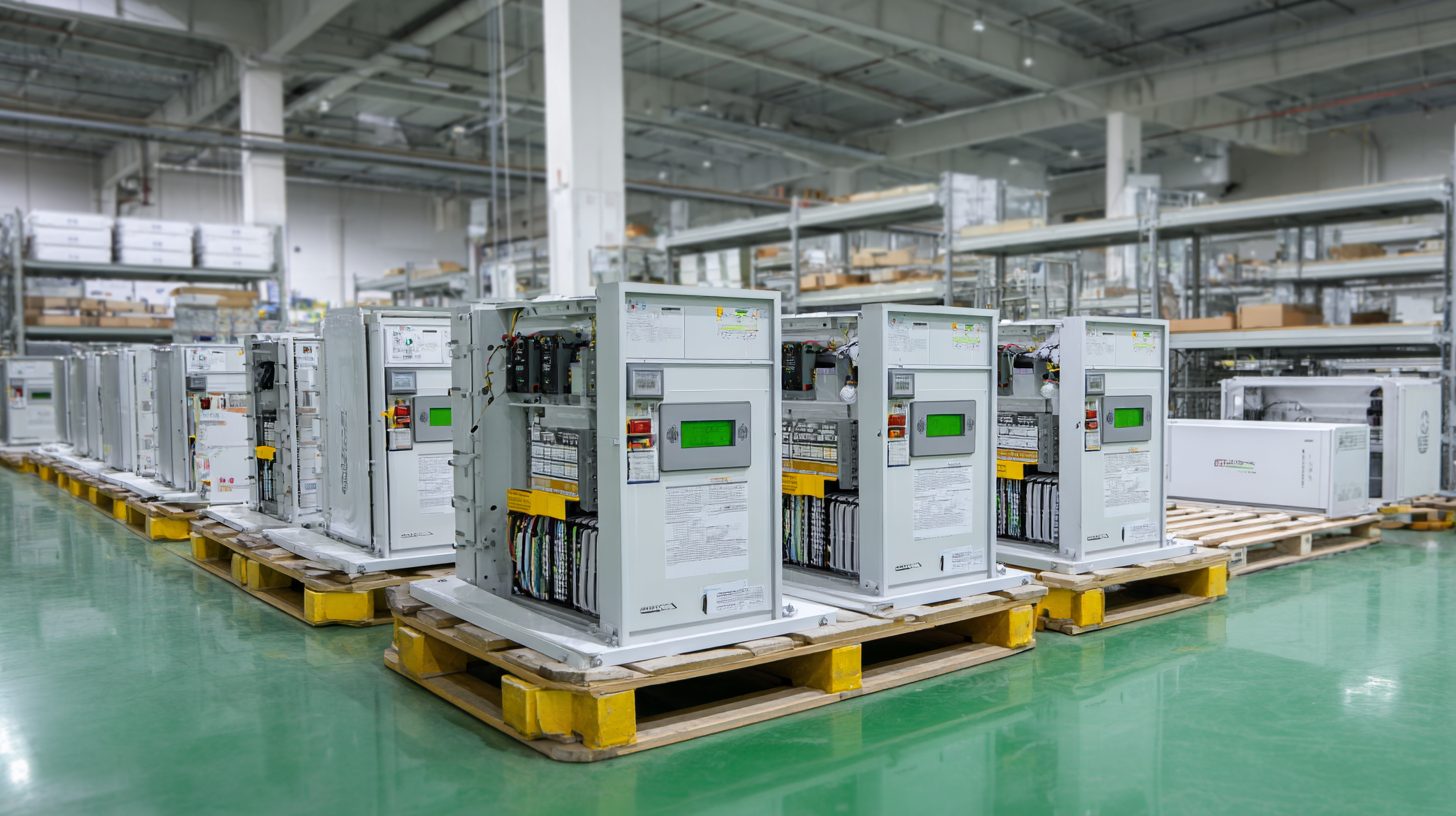SunVena Solar Blog
Residential Solar News, Insights & Resources
Navigating Import and Export Certifications for Best on Grid Solar Inverters in the Global Market
As the global demand for renewable energy solutions continues to surge, the significance of on grid solar inverters in the energy market cannot be overstated. These crucial components not only facilitate the integration of solar energy into existing power grids but also enhance the overall efficiency and reliability of solar power systems. However, navigating the complex landscape of import and export certifications for on grid solar inverters presents both challenges and opportunities for businesses aiming to penetrate international markets.

In this blog, we will explore the technological trends shaping the industry by 2025 and outline the top strategies that companies can adopt to ensure compliance and competitiveness. By understanding the intricate certification processes and aligning with the latest market demands, stakeholders can secure their place in the rapidly evolving global solar sector.
Understanding Key Import and Export Certifications for Solar Inverters
When venturing into the global market for solar inverters, understanding the key import and export certifications is crucial. These certifications not only ensure compliance with international standards but also enhance the credibility and marketability of products. Common certifications include CE, UL, and IEC, which verify that inverters meet safety and performance criteria across different regions. Each certification signifies adherence to specific guidelines that protect both consumers and manufacturers.

Tip: Always conduct thorough research on regional certification requirements where you plan to market your products. Some regions have additional or alternative certifications, such as the PSE certification in Japan or the CEC certification in California, which may significantly impact your market entry strategy.
Additionally, maintaining ongoing compliance with these certifications is essential. Regular audits and inspections can help keep your products up to standard and prevent delays in distribution.
Tip: Consider implementing a dedicated compliance management system to track certification statuses and renewal deadlines. This proactive approach can streamline your import-export processes and help avoid potential fines or penalties associated with non-compliance.
Essential Regulatory Compliance for Global Solar Market Participation
Navigating the complex landscape of import and export certifications is crucial for companies looking to participate in the global solar market. To comply with various regulations, manufacturers of grid-tied solar inverters must familiarize themselves with the certifications required in different regions. These include safety standards, environmental assessments, and performance guarantees, all of which can vary significantly from one country to another.

Tip: Start by identifying the specific certifications needed for your target markets. Research local regulatory bodies and their requirements to ensure that your products meet the necessary standards before attempting to enter those markets.
Understanding the importance of regulatory compliance is essential for maintaining your competitive edge. Countries often have strict mandates to ensure the reliability and safety of solar technology, and adhering to these regulations can significantly impact market access. Non-compliance can lead to costly delays or even bans on product sales in certain regions.
Tip: Engage with local industry experts or consultants who can guide you through the certification process. Their insights can streamline your efforts and help you avoid common pitfalls associated with regulatory compliance in unfamiliar markets.
Top Strategies for Streamlining Certification Processes in Solar Export
When navigating the complexities of import and export certifications for best-in-grid solar inverters, companies can significantly enhance their processes by adopting strategic practices that streamline certification requirements. According to a report by the International Renewable Energy Agency (IRENA), the global demand for solar energy is projected to reach 1,000 GW by 2025, which underscores the need for efficient certification processes that can keep pace with this rapid expansion. Companies must prioritize understanding the specific certification standards in target markets, such as IEC 62109 for safety and performance, to ensure compliance and avoid costly delays.
A key strategy for streamlining certification processes is leveraging technology and automation. Recent studies indicate that organizations that adopt digital certification management platforms reduce their time-to-market by 30%, allowing them to respond quickly to the evolving demands of the solar sector. Moreover, collaboration with local certification bodies can provide insights into regional regulatory landscapes, making it easier to navigate compliance challenges. By effectively integrating these strategies, solar inverter manufacturers can not only accelerate their market entry but also ensure a higher level of product quality and reliability in the competitive global market.
Navigating Regional Variations in Solar Inverter Standards and Certifications
Navigating regional variations in solar inverter standards and certifications is crucial for manufacturers and suppliers aiming to succeed in the global market. Different countries have established varying requirements to ensure safety, efficiency, and environmental compatibility of solar inverters. For instance, the EU mandates compliance with the IEC 62109 standard, which focuses on safety, while the U.S. incorporates UL 1741 for grid-tied inverters. According to the Global Solar Alliance report, over 50% of solar inverter failures can be traced back to non-compliance with local standards, highlighting the importance of thorough certification.
**Tip:** Always conduct an exhaustive analysis of the target market's certification requirements before entering, as this will save both time and resources in the long run. Engaging with local certification bodies can also streamline the approval process.
Different regions also emphasize diverse performance metrics; for example, Europe usually prioritizes efficiency over cost, whereas emerging markets may have more lenient standards to promote affordability. According to a recent report from SolarPower Europe, the global solar inverter market is projected to grow by 10% annually through 2025, emphasizing the need for industry players to adapt swiftly to these variations.
**Tip:** Stay updated with international standardization organizations through their publications to anticipate shifts in compliance requirements, which aids in maintaining a competitive edge.
| Region | Certification Standard | Authority | Validity Duration | Key Requirements |
|---|---|---|---|---|
| North America | UL 1741 | Underwriters Laboratories | 3 Years | Safety and performance testing |
| European Union | EN 50549-1 | European Committee for Electrotechnical Standardization | 5 Years | Grid connection requirements |
| Australia | AS/NZS 4777 | Standards Australia | 5 Years | Inverter performance and safety standards |
| China | GB/T 19939 | China National Standards | 3 Years | Performance and safety testing |
| India | IEC 62109 | Bureau of Indian Standards | 5 Years | Safety and performance standards |
Maximizing Competitive Advantage Through Certification Management
In the ever-evolving global market for solar inverters, effective certification management stands as a pivotal strategy for businesses aiming to maximize their competitive edge. As countries implement varying standards and regulations for renewable energy technologies, navigating import and export certifications has become increasingly complex. A robust certification strategy not only ensures compliance with local and international regulations but also enhances the credibility and marketability of solar inverter products. Companies that proactively manage their certifications can differentiate themselves from competitors by showcasing their commitment to quality and sustainability.
Moreover, leveraging a comprehensive certification management system allows businesses to respond swiftly to changes in regulatory requirements and market demands. By staying ahead of the curve, companies can capitalize on new opportunities as they arise, expanding their global reach and solidifying their position in the industry. As the demand for renewable energy solutions continues to rise, firms that invest in smart certification management are more likely to succeed in establishing themselves as leaders in the solar inverter market. This forward-thinking approach not only maximizes operational efficiency but also fosters innovation in product development, aligning with the broader goals of environmental sustainability and energy efficiency.
Navigating Import and Export Certifications for Solar Inverters
This chart illustrates the percentage of different certifications obtained by manufacturers of on-grid solar inverters in the global market, emphasizing the importance of certification management in maintaining competitive advantage.